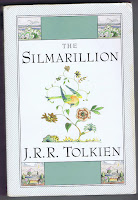 Niceville was another weird one, but ended up being a great additional to my recent catalog of paranormal books. I'm thinking about many of the books I've read this year, which are all listed in "the books" tab at the top of the page. Niceville is a character driven crime or mystery story with a little bit of weirdness kind of creeping around the edges. In fact, the book probably would have read just as well without the weirdness, the paranormal bit was really just another sub-plot, that just as easily could have been jilted love, or spousal abuse. And both of those sub-plots were in there anyways.
Niceville was another weird one, but ended up being a great additional to my recent catalog of paranormal books. I'm thinking about many of the books I've read this year, which are all listed in "the books" tab at the top of the page. Niceville is a character driven crime or mystery story with a little bit of weirdness kind of creeping around the edges. In fact, the book probably would have read just as well without the weirdness, the paranormal bit was really just another sub-plot, that just as easily could have been jilted love, or spousal abuse. And both of those sub-plots were in there anyways.Niceville is not so nice. Obviously the title name of this imaginary southern town, close to the Blue Ridge Mountains, is tongue-in-cheek, and is what drew me to the book in the first place. No one names a book Niceville, and then writes about how nice it is. It also happens, that Niceville is the first in the Niceville Trilogy. I bought this book used, but the book jacket nor the notes inside mention it being part of a trilogy, maybe Carsten Stroud didn't know that when it was published. But then, I'm not sure what goes on the book jacket is up to the author in most cases.
There is a huge cast of characters, and we get bits of the story from the viewpoint of many of them, all living their own lives, and up to their own deeds and thoughts, until their stories all begin to knit together. Its a story-telling technique we've all seen before, and takes some research in the form of cranking through the first hundred pages or so, until you've learned enough about these characters to see the patterns emerge. Being the first of a trilogy presumably means we won't have to do this again, and can take what we've learned into the next two books.
I'm not sure there is a main character or characters, I get the feeling this is cast driven thing, more like Game of Thrones. Everyone in Niceville seems to have a story, so I won't be surprised if some or all of these characters show up in the next books, altho I expect that some may not, and some new ones will probably appear as well. I'm not really expecting the dead ones to show up again, but who knows, there is that paranormal twist I mentioned right? To say nothing of the possibilities of stories from an earlier time period, which I guess is also possible.
Stroud's writing style seems aggressive, short. Staccato is a good term for it. His dialog is not as loose and slangy as Elmore Leonard's, but he does tell a lot of the story with the dialog like Leonard, which I like. I did notice that he used the same simile within a half dozen pages at one point, which struck me as odd, but maybe I missed the point of it. felt like a mistake in the text to me. meyh, what do I know
I'll keep my eye out for the next installment, but I'm not burning down the house to get my hands on it. It was entertaining, and I did find myself spending more time reading than I normally do, but then I've been sick all week, and laying in bed, soo...
























